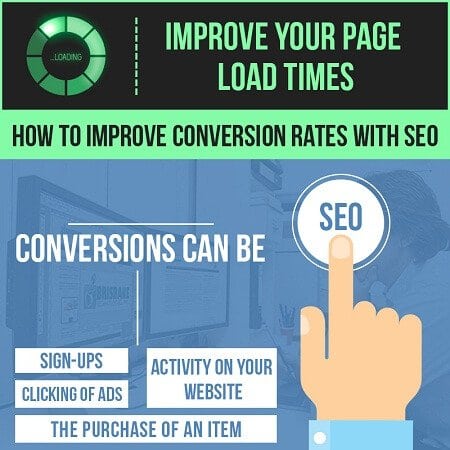 While search engine optimization (SEO) is the big buzzword when it comes to internet marketing, one thing that many webmasters, especially new ones, forget is that the ultimate metric is not rankings or even web traffic, it is conversions. Conversions can be sign-ups, activity on your website, the clicking of ads, or the purchase of an item. Ultimately, for most websites, these are the things that really matter. You should always keep this in mind when you are developing and executing on your SEO strategy because losing sight of this key piece can mean you are squandering resources without getting an appropriate return on investment (ROI).
While search engine optimization (SEO) is the big buzzword when it comes to internet marketing, one thing that many webmasters, especially new ones, forget is that the ultimate metric is not rankings or even web traffic, it is conversions. Conversions can be sign-ups, activity on your website, the clicking of ads, or the purchase of an item. Ultimately, for most websites, these are the things that really matter. You should always keep this in mind when you are developing and executing on your SEO strategy because losing sight of this key piece can mean you are squandering resources without getting an appropriate return on investment (ROI).
One of the important things to keep in mind here is that SEO alone is nothing- you need a strong supplementary CRO (conversion rate optimization) strategy to get the results that you want. Ultimately, it is the user experience that matters and both of these things should help move the needle towards improving the value that you offer to that end user.
One thing that can help you improve conversion rates is to work on your entry pages so that they have a good “scent”. There should be a strong connection between the primary ad or search result and the landing page where it leads. Making sure that the information on the landing page is reassuring to visitors that it is what they are looking for is key here. This will have a large impact on whether or not they stay (and you can measure this with the bounce rate metric). Ways that you can improve the scent of the page include matching the title tags and the headings on the page (specifically ones where you use the HTML H1 markup). You should also adjust the layout back on the keywords and make sure that you do not include out-of-stock products on the page if it is an e-commerce website. You should also add local phone numbers based on GeoIP if you can do that as it gives another level of authenticity. The new click-to-call feature in organic results is also sure to improve your conversion rates in this regard.
A second strategy that you should consider is to do some A/B testing with SEO. This is a very popular method to test what works better in a more scientific manner in the marketing community. Essentially, you create two or more versions of a particular page and you make them all live- loading one at random. Then you just look at the numbers- see what is converting better and you can start to draw out a better picture of what leads to conversions and what does not. If you use this method effectively, you can really create a sort of funnel towards success. One of the important things here is to really consider things scientifically. One of the issues with A/B testing is that it is still correlational to a large degree- extraneous factors such as Google’s algorithm are constantly changing and that can impact results.
A third strategy that you can carry out is to improve your page load times. It may sound silly but it can actually have a substantial impact on your conversions. Even a 10-second delay in load time has been shown to have a significant impact on users and whether they leave. Even when they stay, after a delay, conversions tend to be lower. There are a number of ways you can improve load times. You can use a speed test tool to help you gauge how your interventions are doing. Optimizing images is always a great way to reduce load times as they tend to take up a lot of space. Getting rid of bulky code is also a good way to cut back size without really changing anything on your actual web pages. External embedded media can also be a big drag on a lot of websites, especially if it is hosted on slower servers, etc. If that is the case, you may want to consider self-hosting this content. Just be sure to weigh whether you can afford to host it and keep quality up.
Finally, you should leverage videos to improve website conversion. Explainer videos are especially effective because they help increase page engagement and the time spent on the website. Salesforce, for example, increased their conversion rate by 20 percent after they added an explainer in 2012. This is one of the most famous examples of the power that can have.
The key takeaways here are that SEO is important but only when it is synergized with other strategies to improve your more important metrics including conversion rate. By effectively utilizing landing pages, A/B testing, improving load times, and leveraging videos effectively, you are likely to drive major change for the positive in conversions. Good luck and best wishes on reaching your website goals.
